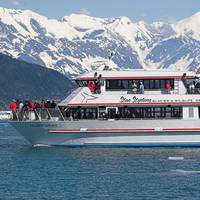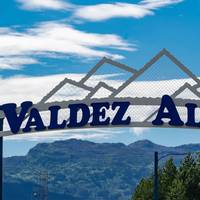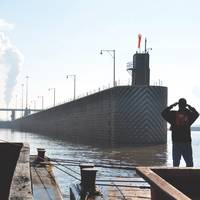The Valdez Spirit: Repowering for a Promising Future

A true family business, Stan and Mary Helen Stephens started operating fishing and hunting charters out of Valdez, Alaska on their first vessel the 26-foot m/v Mary Helen, in 1971. Soon after, the rest of the family joined in, operating tours on the waters around Valdez and in Prince William Sound. They have been promoting the beautiful scenery and important resources of this community ever since, officially as Stan Stephens Glacier & Wildlife Cruises. The business has remained a valuable community asset, contributing economic, educational and environmental benefits to this region.
31 Years Ago Today: The Exxon Valdez Oil Spill

On March 24. 1989, the single-hull tanker Exxon Valdez was departing the Port of Valdez, Alaska with a full load of North Slope crude oil (approximately 1.26 million barrels) destined for Long Beach when it grounded on Bligh Reef in Prince William Sound. The resulting oil spill (approximately 258,000 barrels), while not the largest in US history, was clearly the most important. It engendered much litigation. Public concern over the spill led directly to enactment of the Oil Pollution Act of 1990 (OPA 90)…
An Unlikely and Remarkable Safety Journey

Late last year, the Transportation Research Board released a major study that was undertaken “in response to the rapid development of domestic sources of energy and questions about the safest ways to move these products.” The Study Committee examined the operational responses of the three primary modes impacted by the fracking revolution – rail, pipeline and maritime. A primary observation of this work was that that the “Marine Transportation System Offers a Model for Robust Safety…
Exxon Valdez: March 24, 1989
On March 24, 1989, the tanker Exxon Valdez grounded on Bligh Reef in Prince William Sound, Alaska. The resultant spill of 11 million gallons of crude oil was not the largest in US history and most people forget that salvage and response efforts kept the majority of the oil safety on board the ship. The incident resulted in the relatively swift passage of the Oil Pollution Act of 1990 (OPA 90). A subsequent USCG Report provides some context for the incident and changes that resulted therefrom. One of the ironies of history is that Bligh Reef was named by Captain James Cook (during his third voyage of exploration in 1778) for William Bligh, who served as master of the HMS RESOLUTION during the expedition.
Marine Pollution Control Off-Loads New Carissa
Detroit-based Marine Pollution Control Corp. (MPC), aided in unloading oil from New Carissa, a Japanese-owned wood chip carrier that ran aground in Coos Bay, Ore. MPC was called in because of its experience in pumping viscous petroleum products, including coal tar and asphalt, and in heating oils in order to make them easier to pump. MPC also has extensive experience in working in dangerous, unstable conditions. While only 400 ft. offshore, New Carissa was being rocked by winds and waves. The world-renowned company is best known for helping to clean up the Exxon Valdez oil spill after lightering the cargo remaining onboard after running aground on Bligh Reef. MPC also responded in the Persian Gulf when Iraq dumped millions of gallons of oil into the sea during the Gulf War.






